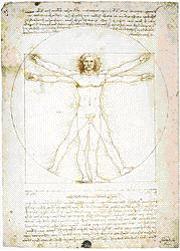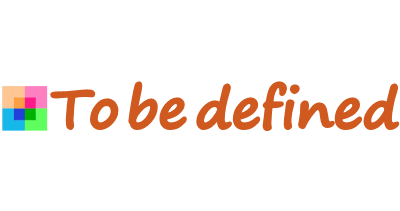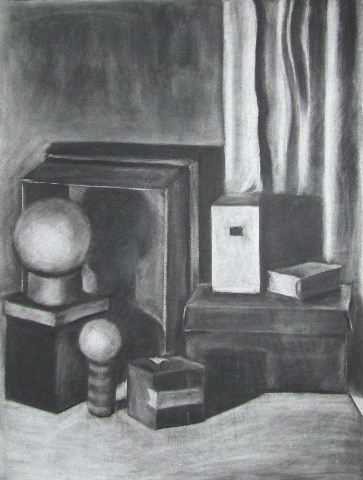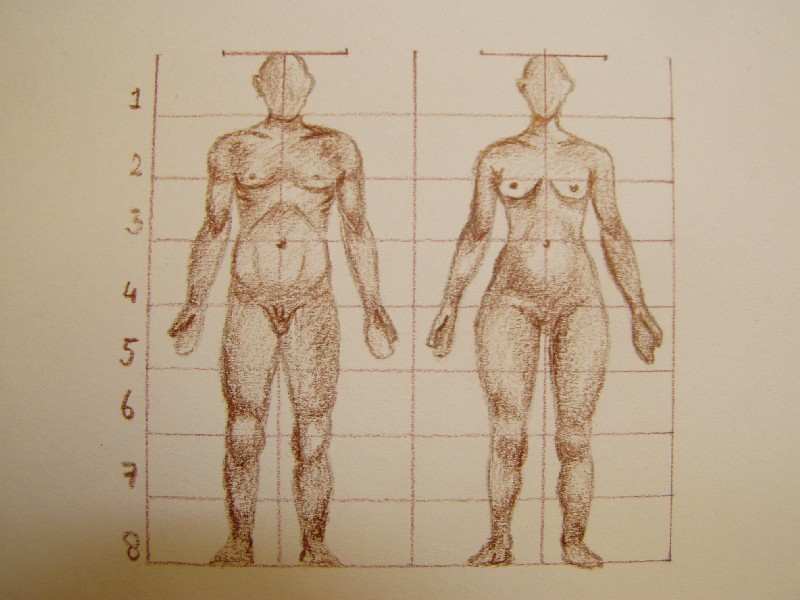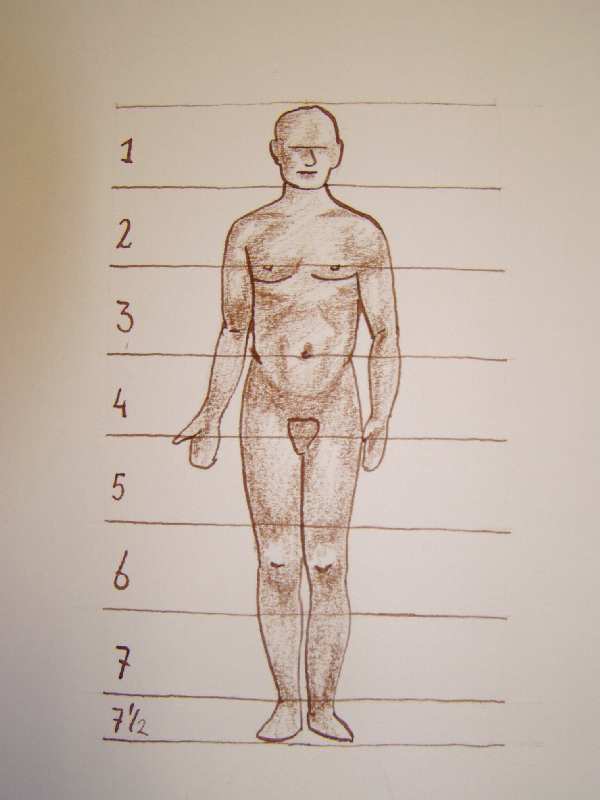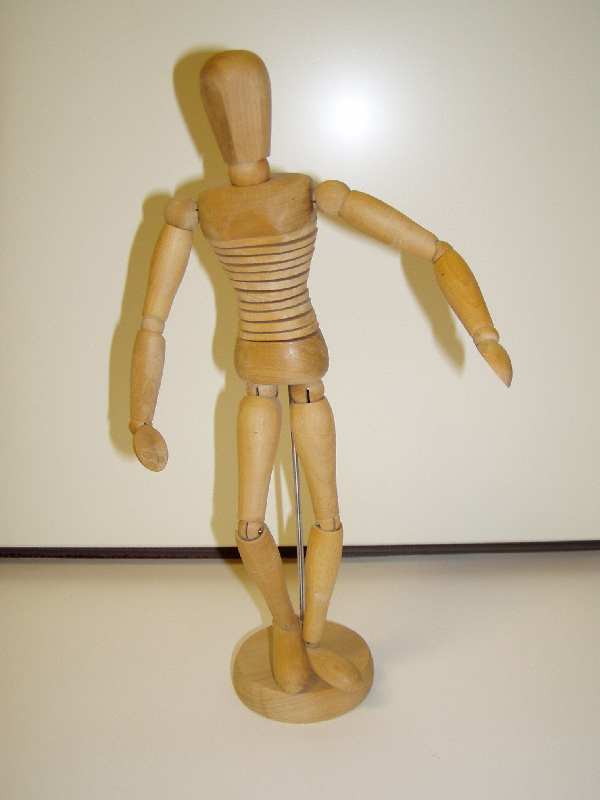Ideal model, 8 head lengths long.
When constructing a figure, there are two common models. One model is based on the ideal figure, where various body parts are measured in "head lengths." The ideal proportions assume that the total body length, both for men and women, is 8 head lengths. An example of both a man and a woman with these ideal proportions is shown in the accompanying image.
General rules:
- The ideal human figure is typically depicted as 8 head lengths tall.
- The most crucial point of the eightfold system is the fourth point. This indicates the transition from the torso to the legs and marks the midpoint of the entire body length.
- The first division point is at the neck, just below the chin.
- The second division point is at nipple height.
- The third division point is at navel height.
- The fourth division point is at the pubic bone.
- The fifth division point is halfway down the thigh.
- The sixth division point is just below the knee joint.
- The seventh division point is in the middle of the shin.
- The eighth division point is at the feet.
- The arms, when stretched out, reach down to the middle of the thighs.
- When you hold your arms horizontally to the sides, the arm span is equal to your height.
|
Average model, 7-7.5 head lengths.
Another model, based on averages, assumes that both men and women are 7 to 7 ½ head lengths tall. An example is shown in the accompanying image. Some general rules for this model:
- The average adult is 7 to 7 ½ head lengths tall.
- The midpoint of the adult figure is in the groin, slightly above the genitals.
- From your toes to your hips (navel) is 4 to 4 ½ head lengths long.
- The distance from your navel to the top of your head is 3 head lengths long.
- When you hold your arms horizontally to the sides, the arm span is equal to your height.
- Your hips are 1 head length high.
- The distance from your elbow to the tip of your fingers is 2 head lengths.
- The distance from your wrist to the tip of your fingers is 1 head length.
- The length of a foot is equal to the length of your forearm.
- The shoulder width is 3 head widths wide.
Remember, these are just helpful measurements that can vary slightly for each individual.
|
Which model do you use?
Which model you use is not very relevant. It is a tool and nothing more. If you want to accurately depict someone, you need to observe the proportions of that specific person. The two models can help you learn to look and serve as guidelines. A mannequin can also be a helpful tool for figure drawing or sculpting. Keep in mind that the lengths and proportions of such a mannequin are based on a model and will likely differ from the person you want to draw or sculpt.
|
Children.
Children have different proportions than adults. The head is relatively much larger. In the accompanying image, you see a child at different ages. Both the length and age are, of course, averages. Some guidelines:
- 0 years old; approximately 50 cm tall
- 3 years old; approximately 90 cm tall
- 7 years old; approximately 105 cm tall
- 14 years old; approximately 150 cm tall
The blue lines indicate the number of head lengths. A newborn child is about 4 head lengths long. Some characteristic features of babies are:
- The short lengths of the legs.
- Very short neck, the head seems to rest on the torso.
- The head length is almost equal to the shoulder width.
You can see that the midpoint of the body shifts from the navel to the pubic region over 14 years. The head becomes relatively smaller..
|
Additional Points for Figure Drawing
- Women have wider hips than men.
- The wrist aligns with the groin when the arms hang beside the body.
- When working on the head, use the ears and eyes as guides. Draw a line between both ears, and you have a handy guide to judge the head's angle. This helps determine where the nose, eyes, and mouth should be.
- The line running over the navel is a good guide for finding the hip position. Using the navel as a reference point also makes it easy to determine where the chin will be, left or right from the navel line.
- Pay attention to differences in height between the breasts, hips, buttocks, and knees. These indicate how the weight is distributed.
- A woman's breasts do not point straight forward but sideways, to the left and right.
- The inside of the calf is more rounded than the outside of the calf.
|
